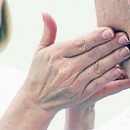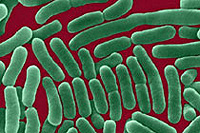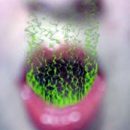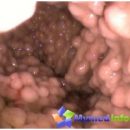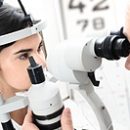Among the drugs for the treatment of scabies, there are modern, having high efficiency and low toxicity, which allows you to quickly get rid of an unpleasant disease.
Content
My favorite disease — scabies: scratched and still want. (Fain Ranevskaya)
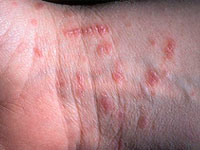 Currently, scabies remain one of the most commonly encountered skin parasitic diseases. In the world more than 300 million people are sick annually. In Russia, the incidence rate in 2012 amounted to 80.3 cases per 100,000 population. However, the actual incidence rate of scabies is significantly higher. This is evidenced by the volume of sales of anticipation. The high level of morbidity is due to unsatisfactory socio-economic conditions of life, the migration of the population, the increase in the number of socially non-adapted layers and low sanitary and hygienic levels of the population, the immunological characteristics of this disease. From the moment of infection until the first signs of the disease, it can pass from two to six weeks with a primary infection, and maybe only a few days when re-illness.
Currently, scabies remain one of the most commonly encountered skin parasitic diseases. In the world more than 300 million people are sick annually. In Russia, the incidence rate in 2012 amounted to 80.3 cases per 100,000 population. However, the actual incidence rate of scabies is significantly higher. This is evidenced by the volume of sales of anticipation. The high level of morbidity is due to unsatisfactory socio-economic conditions of life, the migration of the population, the increase in the number of socially non-adapted layers and low sanitary and hygienic levels of the population, the immunological characteristics of this disease. From the moment of infection until the first signs of the disease, it can pass from two to six weeks with a primary infection, and maybe only a few days when re-illness.
The life cycle of the garlic tick consists of two parts: short-term abnormal and long-term intrader. The development of the chicken mold from eggs to the larva occurs in a scabies, which threatens the flourling female. The process of introducing females on the human skin in the experiment takes from 15 minutes to one hour. Professor Tatyana Sokolova in 1991, in the experiment, he identified the characteristic daily rhythm of the activity of garlic ticks, which explains the strengthening of itching and the predominance of the direct path of infection when contacting in bed in the evening and night time, as well as the higher efficiency of anticient drugs applied for the night. The overall fertility of females of the garlic tick is relatively small, on average 40-50 eggs during her life. Females, hitting a person when infected or finishing the transformation from the larvae into a young female in the hair follicles, are introduced only at certain areas of the skin, mainly at the brushes, wrists, feet, genitics of men. Seasonal fertility of the Chesocci Tick and an increase in it in September-December coincide with increasing incidence at this time of year. Outside the person scales are short-lived, their viability depends on the humidity and ambient temperature. Pliers are unable to maintain a water balance due to the absorption of water from the air and the cause of their death outside a person is not starvation, but moisture deficiency. Skin-fitted female are introduced within an hour, larvae — A few minutes later. Brushes, which are places of favorite localization of females of a garlic tick, are a mirror of scabies. It is here that in the scales, the bulk of the larvae is formed, which are passively spread throughout the body.
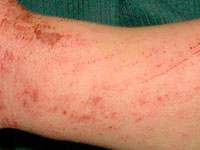 The main clinical symptoms of scabies are scabies, small inflammatory rash with characteristic localization on the patient's body, as well as the symptoms of the ardi (the presence of guns and purulent crusts on the elbows and in their circumference), Gorchakova (the presence of bloody crusts), Michaelis (the presence of bloody crusts and pusoids in an inter-fodder fold with the transition to the crescents), sesari (discovery of scabies in the form of a lightweight elevation when skin stroke. Several clinical varieties of scabies are distinguished: typical scabies, scabies without moves, Norwegian scabies, scabiose erythrodermia, scabies «Chistopotny», or scabies «incognita», Complicated scabies, scabiose skin lymphoplasia, pseudosarkoptosis.
The main clinical symptoms of scabies are scabies, small inflammatory rash with characteristic localization on the patient's body, as well as the symptoms of the ardi (the presence of guns and purulent crusts on the elbows and in their circumference), Gorchakova (the presence of bloody crusts), Michaelis (the presence of bloody crusts and pusoids in an inter-fodder fold with the transition to the crescents), sesari (discovery of scabies in the form of a lightweight elevation when skin stroke. Several clinical varieties of scabies are distinguished: typical scabies, scabies without moves, Norwegian scabies, scabiose erythrodermia, scabies «Chistopotny», or scabies «incognita», Complicated scabies, scabiose skin lymphoplasia, pseudosarkoptosis.
For such a rare, but severe condition, as Norwegian scabies are characterized by severe dryness, inflammation and peeling of the skin, multi-layer peels, the highest infection (on the patient there can be up to two kilograms of ticks, and their number is millions).
The variety of clinical manifestations during scabies requires in all cases of diagnosis on the basis of a complex of clinical and epidemic data confirmed by laboratory detection of the pathogen. There are several methods of laboratory diagnostics of scabies: extraction of a needle tick, thin skin sections with acute razor or eye scissors, scalpel scope using alkali or lactic acid. In addition, dermatoscopy methods are currently widely used, allowing the patient to quickly confirm the diagnosis of the disease.
The treatment of scabies is aimed at the destruction of the pathogen with the help of acaricidal drugs. Arsenal them is significant. In our country, desigal, benzylbenzoate, medifox, sulfur ointment, sodium hyposulfit with hydrochloric acid (Professor Method. NS. Demyanovich).
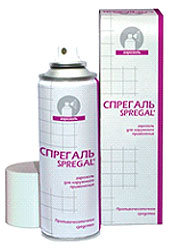 General principles for treating patients with scabies are as follows:
General principles for treating patients with scabies are as follows:
- Treatment of all patients identified in one focus (for example, in a family) should be carried out simultaneously to avoid infection from each other;
- rubbing anticipation of drugs in children under 3 years is carried out in all skin cover, the remaining sick exception is a head;
- rubbing any drug is carried out only by hand, not a napkin or a tampon, which ensures the best penetration of the drug in scales at the brushes;
- Treatment must be carried out in the evening, which is associated with the night activity of the pathogen.
Each drug has its own features of application, so it is important to carefully follow the instructions for use and instructions of the attending physician. The most efficient and safe drugs currently include the preparations of the Permeter group (Sprogal, Medifox). In most developed countries, derivatives permererine are drugs for the treatment of scabies due to their low toxicity and high anticient activity.
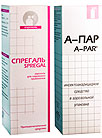 To prevent re-infection, it is necessary to carry out disinsection of bedding, clothing and personal hygiene items. Disinfection of bedding, underwear and towels can be carried out either by boiling in 1–2% solution of soda or any washing powder for 5–7 minutes from the moment of boiling, or soaking for an hour in chlorine-containing solutions (whiteness, ac). Upper clothes (dresses, pants, costumes, jumper and t. NS.) disinfected by stroking on both sides by a hot iron. Part of things that are particularly not subject to heat treatment can be processed by A-steam aerosol.
To prevent re-infection, it is necessary to carry out disinsection of bedding, clothing and personal hygiene items. Disinfection of bedding, underwear and towels can be carried out either by boiling in 1–2% solution of soda or any washing powder for 5–7 minutes from the moment of boiling, or soaking for an hour in chlorine-containing solutions (whiteness, ac). Upper clothes (dresses, pants, costumes, jumper and t. NS.) disinfected by stroking on both sides by a hot iron. Part of things that are particularly not subject to heat treatment can be processed by A-steam aerosol.



